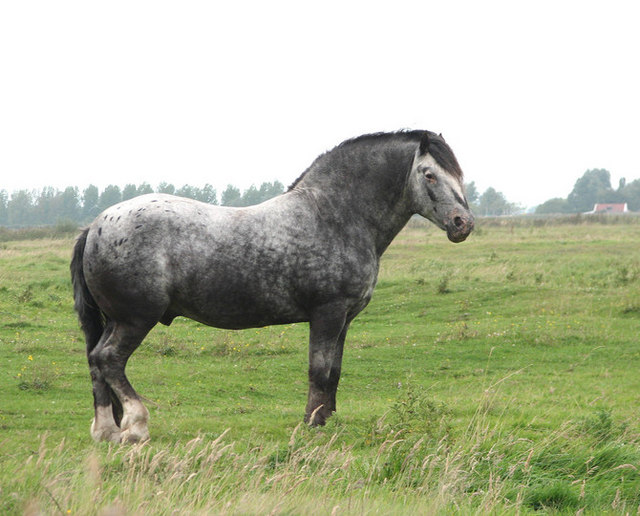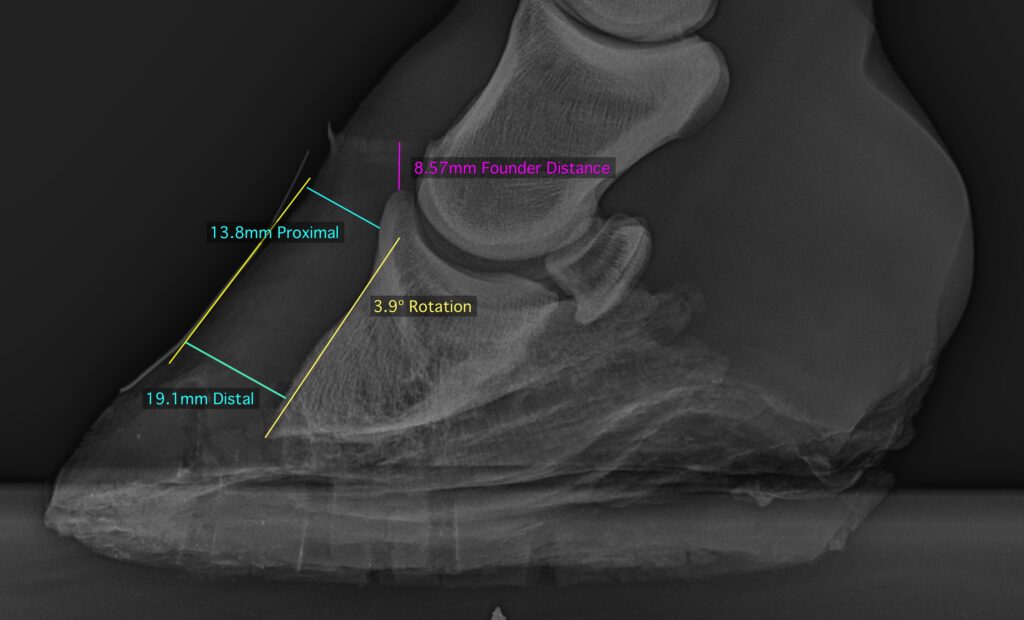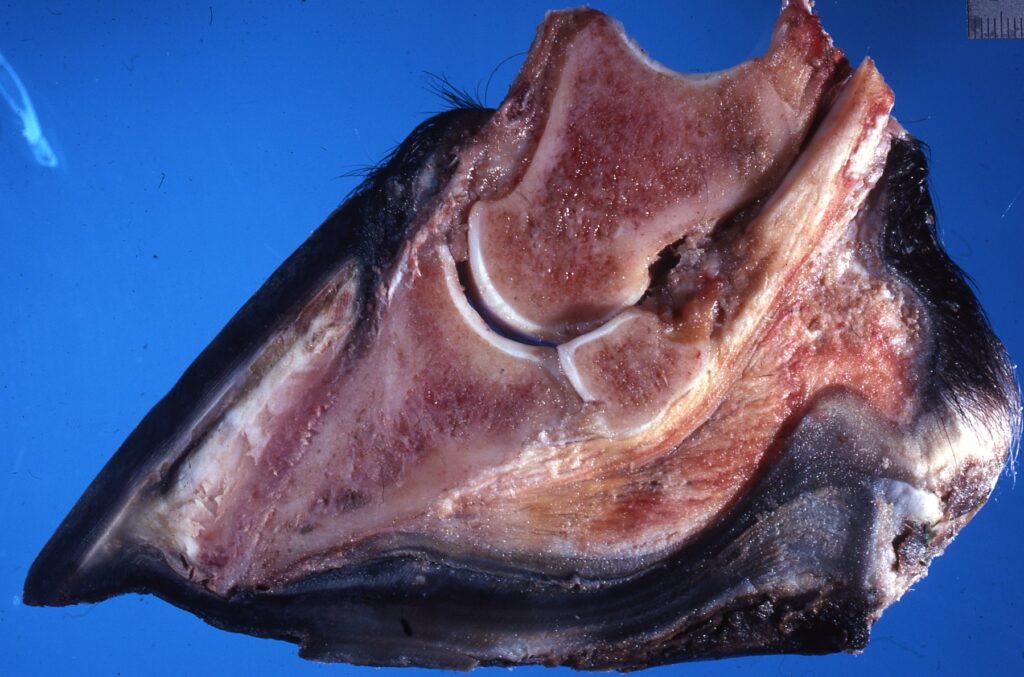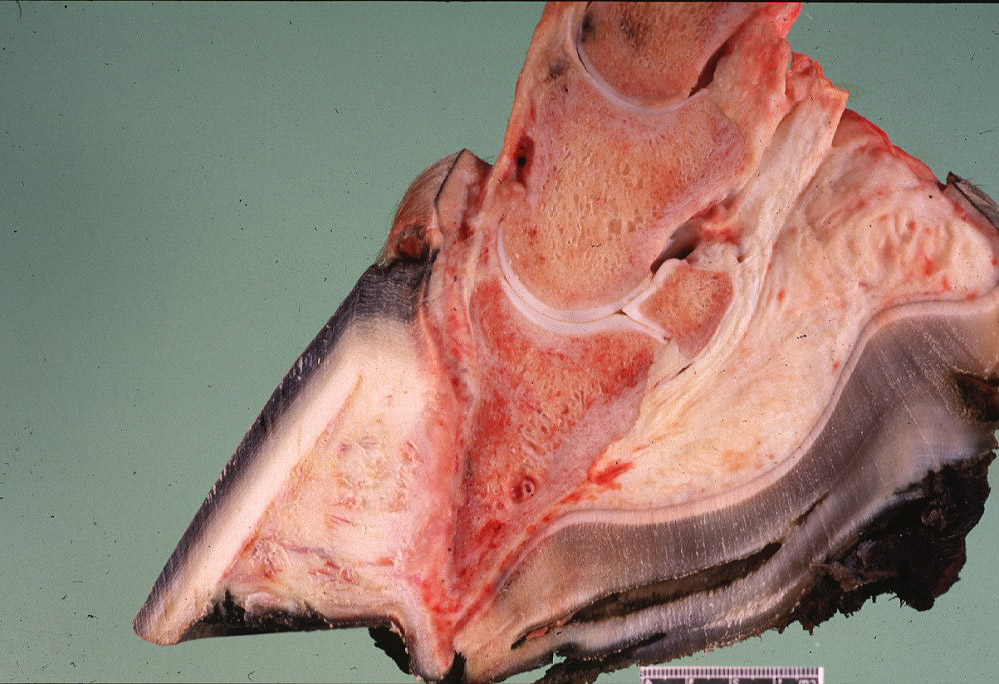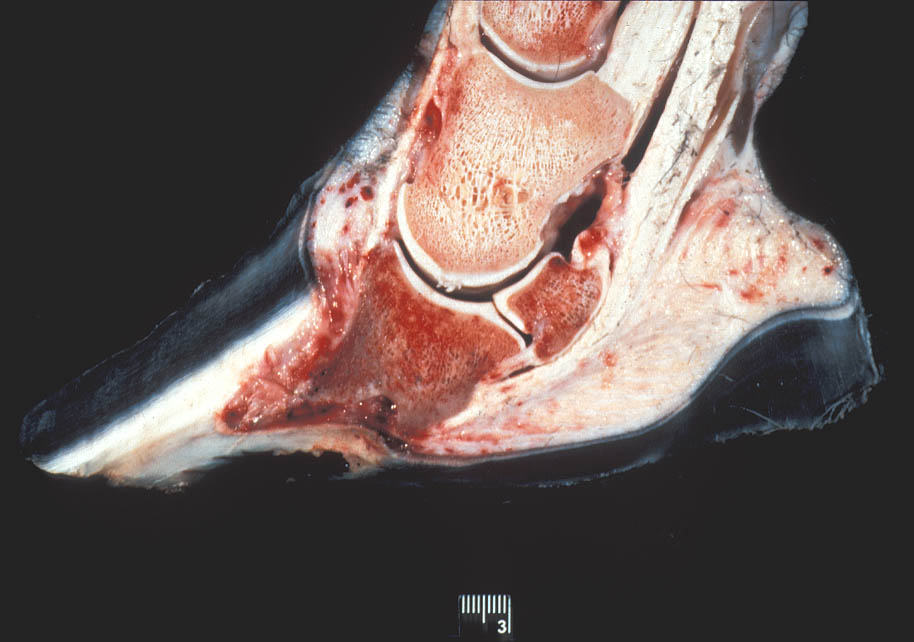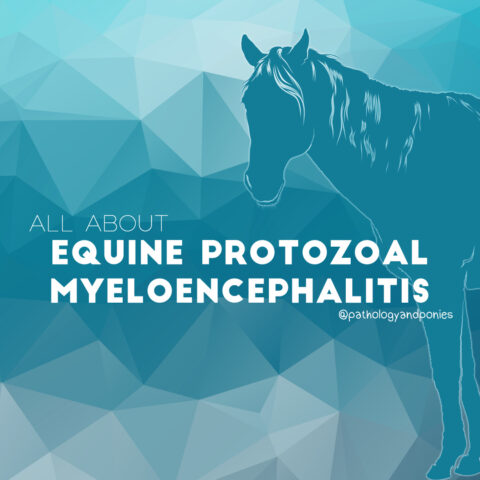Today is going to be a double path round day, since we have two related diseases to discuss! Both were a common request. This post is on 𝐞𝐪𝐮𝐢𝐧𝐞 𝐦𝐞𝐭𝐚𝐛𝐨𝐥𝐢𝐜 𝐬𝐲𝐧𝐝𝐫𝐨𝐦𝐞 (EMS).
𝐖𝐡𝐚𝐭 𝐢𝐬 𝐢𝐭?
𝐄𝐌𝐒 is an endocrine dysfunction of 𝐢𝐧𝐬𝐮𝐥𝐢𝐧, the body’s main hormone it uses to get 𝐠𝐥𝐮𝐜𝐨𝐬𝐞 (the main sugar used for energy) into cells. In normal horses, insulin levels increase when blood glucose levels increase, to help store the glucose away in cells and provide the cells energy. In EMS horses, they typically have 𝐡𝐲𝐩𝐞𝐫𝐢𝐧𝐬𝐮𝐥𝐢𝐧𝐞𝐦𝐢𝐚, which is when there are high levels of insulin despite normal levels of blood glucose.
𝐖𝐡𝐨 𝐠𝐞𝐭𝐬 𝐢𝐭?
This disease typically develops in horses between 5-15 years of age, and it is most commonly obese horses that develop it. The breeds that are predisposed are typically the “easy keeper” breeds like ponies and Quarter Horses.
𝐖𝐡𝐚𝐭 𝐜𝐚𝐮𝐬𝐞𝐬 𝐢𝐭?
The underlying cause of EMS is not known, however it seems strongly linked to obesity. However, the main outcome is hyperinsulinemia, which can have significant effects in equines!
𝐖𝐡𝐲 𝐢𝐬 𝐭𝐡𝐢𝐬 𝐚 𝐩𝐫𝐨𝐛𝐥𝐞𝐦?
Prolonged high levels of insulin in the blood has been strongly associated with the development of 𝐥𝐚𝐦𝐢𝐧𝐢𝐭𝐢𝐬, which is inflammation of the 𝐥𝐚𝐦𝐢𝐧𝐚𝐞, the major connective tissue between the 𝐜𝐨𝐟𝐟𝐢𝐧 𝐛𝐨𝐧𝐞 (the main bone within the hoof) and the hoof wall. It is currently not known why high levels of insulin causes laminitis, but it is believed to be related to changes in blood flow to the foot, and possible activation of 𝐦𝐚𝐭𝐫𝐢𝐱 𝐦𝐞𝐭𝐚𝐥𝐥𝐨𝐩𝐫𝐨𝐭𝐞𝐢𝐧𝐚𝐬𝐞𝐬, which are enzymes that break down 𝐜𝐨𝐥𝐥𝐚𝐠𝐞𝐧 (a main structural protein in the laminae).
Laminitis is extremely painful for horses, as they have a large amount of nerves in the laminae. When the laminae have separated, the coffin bone essentially falls victim to gravity and the weight of the horse standing on it. There are two possible outcomes from this: rotation, and sinking.
Rotation happens because of the 𝐝𝐞𝐞𝐩 𝐝𝐢𝐠𝐢𝐭𝐚𝐥 𝐟𝐥𝐞𝐱𝐨𝐫 𝐭𝐞𝐧𝐝𝐨𝐧’s attachment to the coffin bone. This tendon is the main tendon the horse uses to bend its leg, and it uses the coffin bone as an anchor. Typically, the laminae at the front of the hoof begin to separate, allowing the coffin bone to rotate and point downward. If left uncontrolled, the bone can actually poke through the bottom of the hoof. Mega ouch!
Sinking is a really severe form of laminitis, where the laminae all around the perimeter of the hoof have begun to separate. In this case, the entire coffin bone sinks down into the foot, getting closer to the ground. Again, if left untreated, this can lead to the bone poking out of the bottom of the foot.
𝐇𝐨𝐰 𝐢𝐬 𝐢𝐭 𝐝𝐢𝐚𝐠𝐧𝐨𝐬𝐞𝐝?
Veterinarians can have a pretty good idea if a horse has EMS just by looking at them. Horses will be obese, with 𝐫𝐞𝐠𝐢𝐨𝐧𝐚𝐥 𝐚𝐝𝐢𝐩𝐨𝐬𝐢𝐭𝐲, which are large fat deposits in the neck and over the tailhead. Horses may also have signs of laminitis.To confirm the diagnosis, veterinarians will test for PPID to rule it out (today’s other post!) and test for 𝐢𝐧𝐬𝐮𝐥𝐢𝐧 𝐫𝐞𝐬𝐢𝐬𝐭𝐚𝐧𝐜𝐞. To test for insulin resistance, the veterinarian will give the horse corn syrup, and measure insulin levels in the blood in response to the sugar meal. Remember how insulin should go up with increased blood sugar? If the insulin level does not go back down appropriately, then the veterinarian can diagnose 𝐢𝐧𝐬𝐮𝐥𝐢𝐧 𝐝𝐲𝐬𝐫𝐞𝐠𝐮𝐥𝐚𝐭𝐢𝐨𝐧 characteristic of EMS.
𝐇𝐨𝐰 𝐢𝐬 𝐢𝐭 𝐭𝐫𝐞𝐚𝐭𝐞𝐝?
The mainstays of treatment for EMS are diet and exercise. Since EMS is so closely linked to obesity, diet and exercise to help the horse lose weight can help the horses immensely. The main diet change is to reduce the amount of sugar the horse is consuming, to help prevent insulin spikes in the bloodstream. If diet and exercise aren’t working, medications like 𝐭𝐡𝐲𝐫𝐨𝐱𝐢𝐧𝐞, to increase the body’s metabolism, or 𝐦𝐞𝐭𝐟𝐨𝐫𝐦𝐢𝐧, a drug to prevent high blood glucose, can be used as part of the horse’s treatment plan.
𝐒𝐨 𝐰𝐡𝐲 𝐝𝐢𝐝 𝐲𝐨𝐮 𝐩𝐨𝐬𝐭 𝐛𝐨𝐭𝐡 𝐨𝐟 𝐭𝐡𝐞𝐬𝐞 𝐝𝐢𝐬𝐞𝐚𝐬𝐞𝐬 𝐭𝐨𝐝𝐚𝐲? 𝐓𝐡𝐞𝐲 𝐝𝐨𝐧’𝐭 𝐬𝐞𝐞𝐦 𝐬𝐢𝐦𝐢𝐥𝐚𝐫 𝐚𝐭 𝐚𝐥𝐥…
Good question! Because both diseases can cause laminitis and insulin dysregulation, and can actually occur at the same time in the same horse, some people think they are the same thing. However, they do have very different root causes and treatment plans. This is why it’s important to speak to your veterinarian about any changes you see in your horses… sometimes Dr. Google can lie to you!
𝐏𝐡𝐨𝐭𝐨𝐬
1) A horse showing 𝐫𝐞𝐠𝐢𝐨𝐧𝐚𝐥 𝐚𝐝𝐢𝐩𝐨𝐬𝐢𝐭𝐲, with excessive fat over the rump and neck.
2) An X-ray of a laminitic hoof showing how rotation and sink (founder distance) can be measured, to help identify how severe the laminitis is.
3-4) Severe cases of laminitis, one where the coffin bone has almost poked through the sole, and one where the bone is completely through.
5) Another severe case of laminitis displaying a different “option” for the coffin bone… complete destruction! This bone has undergone 𝐥𝐲𝐬𝐢𝐬 and no longer has a nice pointed tip like it should have.
𝐒𝐨𝐮𝐫𝐜𝐞𝐬
Kritchevsky, J.E. Overview of Equine Metabolic Syndrome. Merck Veterinary Manual. 2019.
Photo 1 courtesy of Wikimedia Commons.
Photos 3-5 courtesy of Noah’s Arkive.

